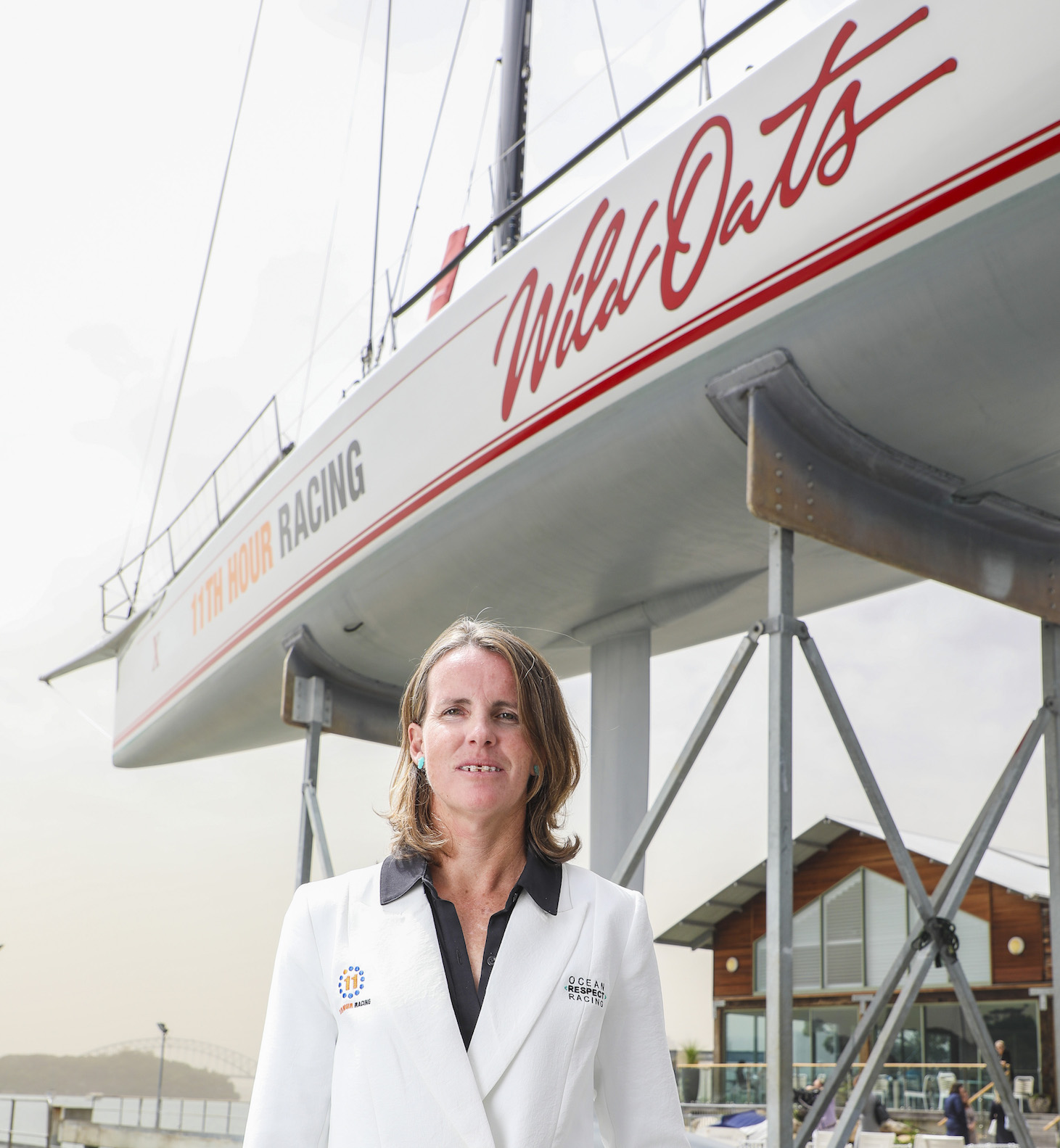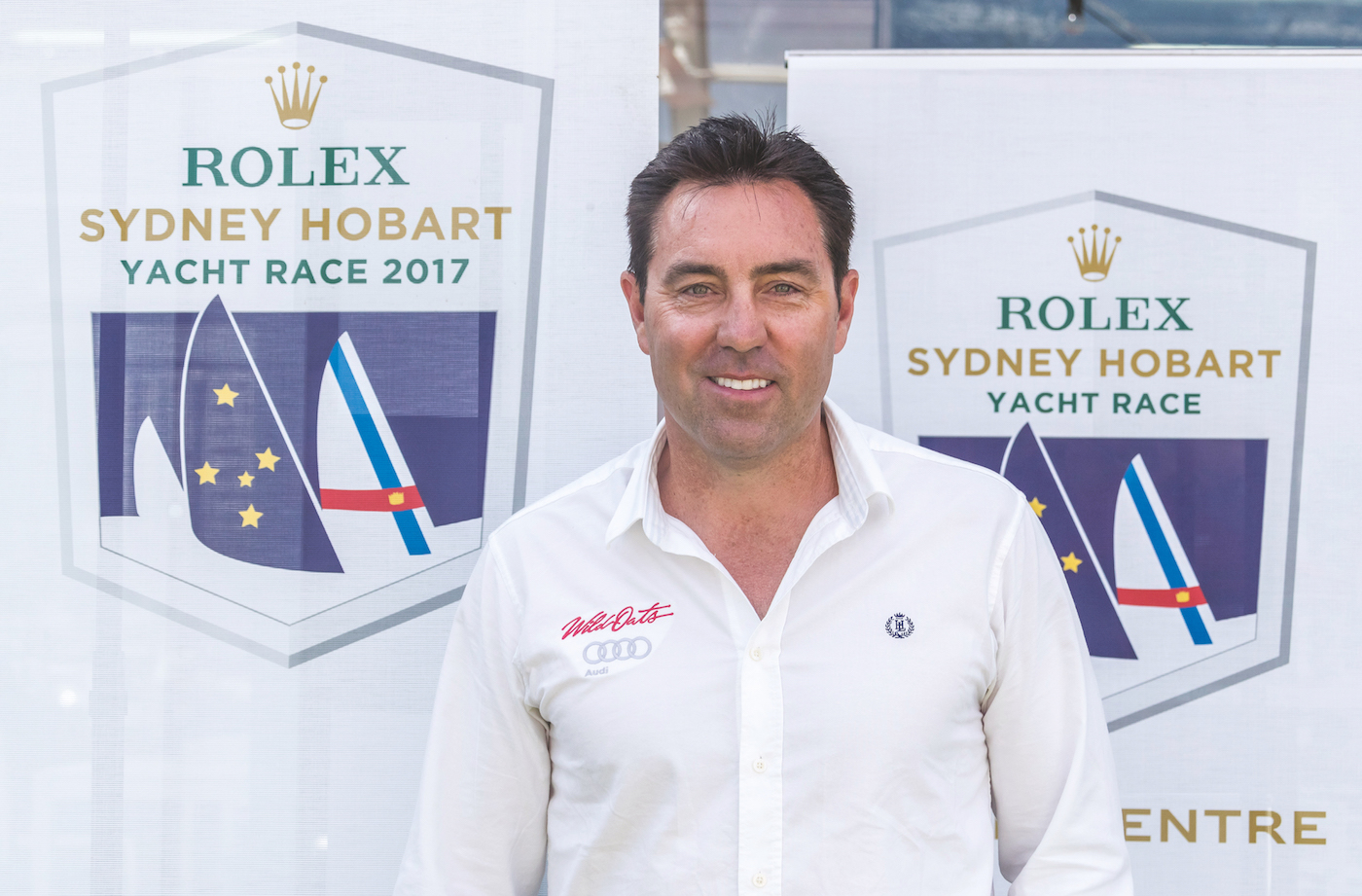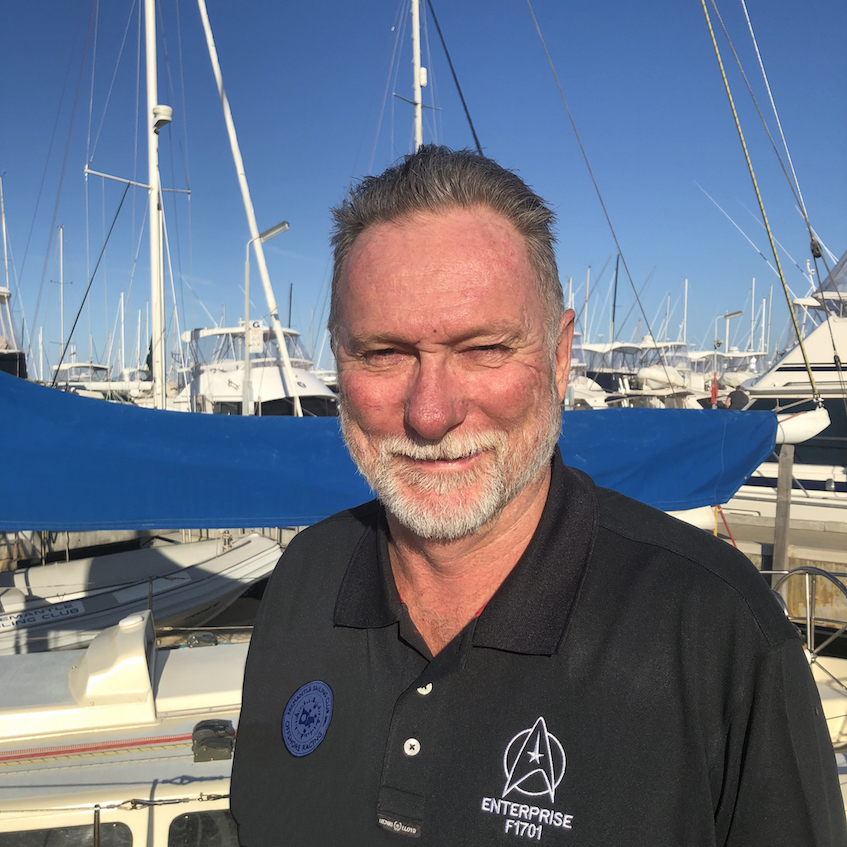Leadership model
For the skippers, in a sense the race is the easy part. There is so much involved in putting a team together and ensuring the boat and safety equipment is ready for the rigours ahead. We spoke to three skippers about taking on one of yachting’s greatest challenges.
Written by Scott Alle
17 December 2018
Advertisement
Stacey Jackson
Skipper / WILD OATS X
Highly respected Sydney Hobart and Volvo Ocean Race veteran Stacey Jackson has put together a fantastic campaign for this year’s bluewater classic. Her top-ranked all female crew will be mixing it with the fleet’s serious overall chances on Wild Oats X, which is generously on loan from the Oatley family. Former Foreign Minister Julie Bishop is the team’s ambassador and may even do the start before stepping off near the Heads.
There’s a lot of genuine enthusiasm for Ocean Respect Racing, how did the team come to fruition?
At the end of the Volvo [Ocean Race] the guys on the program were having their conversations about Hobart, and I was like, I’m going to have my own team and we’re going to do it. We have amazing women in our sport and this is a great opportunity to support that.
Yours is one of only a few professional all-woman crews to have ever entered the race. Is sailing lagging behind other sports when it comes to gender equality?
We are professional in the sense we all work in the yachting industry and are sailing at a professional level.
Sailing is probably a little behind a lot of other sports. Cricket has gone forward with all female teams, the AFL has a women’s league. If a professional male at the same level gets paid, a female should. Very similar to the World Surf League where they matched the women’s prize money to the men’s just this year. It’s time for it to happen in sailing – and I believe it will.
Advertisement
Wild Oats X’s debut record in the race was impressive (11th on IRC in 2017, sixth on line), what’s your feeling for this year?
The boat has proven that’s its good but everything comes down to weather in this race. It’s a scaled-down version of Wild Oats XI and Black Jack, she’ll run very fast and hard in the right conditions, and actually we wouldn’t mind going upwind a bit for a result. A beautiful yacht to sail.
Your team has a combined total of 68 Sydney Hobarts and 21 laps of the planet. You have some very well-known names in ocean racing circles – Sophie Ciszek, Caroljin Brouwer, Vanessa Dudley, Sue Crafer. What dynamic were you trying to create on board?
We will take 13 on the race. I’ve assembled the best possible crew from around the world and Australia. As far as starting positions are concerned Sophie’s on the bow, Caroljin will be helming, Katie Spithill’s the tactician, Keryn McMaster from New Zealand is the main trimmer. Vanessa and Sue who have a wealth of big-boat experience are trimmers, plus Bianca Cook from Turn the Tide on Plastic, and Katie Pettibone who’s a two-time Volvo and three-time America’s Cup crew member. Jade Cole is our pit, Faraday Brooke Martin the boat captain, and Libby Greenhalgh from SHK Scallywag will navigate. I will be crew boss at the start but offshore I will trim and drive.
The Ocean Racing Respect campaign also has a strong environmental focus, following on from your time aboard Vestas 11th Hour Racing. What did you see while you were out there that influenced your attitudes to sustainability?
Sailing out from the coast of Brazil, we passed through a field of oil rigs which has its own environment where there was a lot of smoke and all kinds of gas discharges. It was sickening to sail through it, oil being such a major component in the production of plastics. We can’t enjoy the oceans and not do something about helping them.
Mark Richards
Skipper / WILD OATS XI
Few teams in international sports can match the pedigree of Wild Oats XI. An infringement at the start of the 2017 Rolex Sydney Hobart cost Mark Richards and his stellar crew a ninth line honours crown and a new race record in one of the world’s toughest ocean races. Undeterred, they are lining up in 2018 with Richards again at the helm.
All the supermaxis have been doing mods, looking for performance gains. A popular addition seems to be reaching struts from the Volvo race. What tweaks or changes have been made to the boat?
We’ve got a new reaching strut; we’ve got four new sails that we’ve never really had before, to focus on our reaching performance to close that gap between Comanche and us. We’ve got a new VMG running chute which is proabably going to be the fastest spinnaker we’ve ever had on the boat. We’ve got a new forestay – a stronger, stiffer forestay. The boat’s going really well, we’ve just got to focus on getting the best out of it.
Wild Oats XI is not an around-the-cans boat, it’s a Sydney Hobart boat. That’s what we’ve done it [the modifications] for.
What’s she like to steer now, how has that changed?
As an offshore boat it’s a way, way better boat. Downwind, heavy air running it’s performing very well. If you look at all these boats (the supermaxis) it’s very clear you can’t have everything. You need to be as strong as you can in all areas.
Do you find it interesting that the biggest concentration of 100-footers is really only in the Sydney Hobart?
There are six true 100-foot race boats in the world and the only one that’s not here is Leopard. It’s fantastic for the race that five are here. The criticism about it [the RSH] concentrating too much on the line honours boats doesn’t recognise the spectacle they are in the world of yachting. But the good thing is everyone in the fleet has a chance of winning the Tattersall Cup.
I guess the one substantial positive out of last year was that you did beat Comanche on the water?
We still sailed a great race. There was a cock-up at the beginning, at the end of the day we broke the record. It wasn’t all disappointing for us, it was one of the best sails I’ve ever had in my life. But it’s all about this year and Wild Oats XI is still the benchmark really.
How long do you think it will be till we see a foiling 60 in the race, and will that change the character of the race?
I still believe the foiling 60s won’t be able to match these big boats in the Sydney Hobart. We were out training in 20–25 knots of upwind breeze. Those 60s will still be miles behind us in that. It was rough, big seas and the foils are doing nothing for you in those conditions. Those boats are amazing in good reaching [conditions]. You go VMG running in a lot of wind, those boats will finish a long way behind these 100-footers. You get a southerly or due nor’easter they’ll be miles behind the big boats.
How do you keep the team motivated and focused?
We love what we do. We go in it to win it – but winning’s not to the be all and end all. We’re all getting older, it’s not going to last forever. The fact that we’re keeping this boat at very top end of competition shows the Oatley family’s and our commitment to the sport.
Anthony Kirke
Skipper / ENTERPRISE
Since buying modified Farr 40 Enterprise three years ago, Anthony Kirke from Fremantle has been on a mission to take part in Australia’s world class ocean race. That’s involved a serious logistical effort in bringing the boat to Sydney and mixing it with the big names – a challenge he and his crew seem to be greatly enjoying.
You have made a huge commitment to do this race. What has been the lead-in?
We set out to do this two-and-a-half years ago. You just don’t ring a few people up and head over to the east coast and go sailing. It takes that time to properly set the boat up and get the crew together and make it happen. Everyone on the crew would say the experience has been worth it. If we can get to Hobart that will cap it off.
What is Enterprise’s best weather for you to achieve the best result possible?
That would be 15 knots preferably on the nose – the TP52s can’t plane. Hopefully we’ll get some of that over the race. We want to do well in our division against similar length boats in similar wind conditions. The wind gods in the Derwent I think determine which division wins the race.
You are over here against the country’s best offshore boats and you are doing really well. Where does the motivation come from?
Doing the Rolex Sydney Hobart is really the pinnacle of yacht racing in Australia. To come over and be competitive is fantastic and we’re really happy how it’s going. There’s amazing support from the sailing community in WA as well.
You recently came 7th overall in the Cabbage Tree Island Race in front of at least one TP52 and another former Hobart winner. That must be a bit of a confidence booster?
We’re very happy with that result. Particularly as we dropped back a bit with the wind changes around Cabbage Tree and had to work very hard to get back up the field on the return leg.
This is your first Sydney Hobart. How worried are you about Bass Strait’s notorious reputation?
The west coast has its share of rough conditions. We’ve got very experienced sailors on the boat, we know each other well. We’ve done a lot of work on prepping the boat; recently we’ve put a three-reef main on and spent a lot of time setting that in combination with a smaller jib.
What’s your sailing background?
I came to the sport quite late – I started when I was around 15. We lived inland, and we went to Esperance so I learnt to sail there on dinghies and smaller boats. I only started offshore sailing about ten years ago. You would see stories about the Sydney Hobart and it looked pretty daunting, but doing more offshore races we’ve been out in some really big storms and our confidence has grown about being able to handle the hard stuff.
How have you found being based in Sydney for the Blue Water Point Score races?
Everyone has been very welcoming, the Smuggler guys even bought us a few beers. The ocean racing community has made us feel right at home.
What about the start? It can be fairly hectic – what’s your strategy?
Our tactician Mark Lovelady has a tendency to a be a bit aggressive and doesn’t like to be a second late on the line. When we’re starting I tend not to look; I just steer where Mark tells me. Having said that we intend to be there at the end and we’re not going to do anything to jeopardise that.
Advertisement
Advertisement
Advertisement





